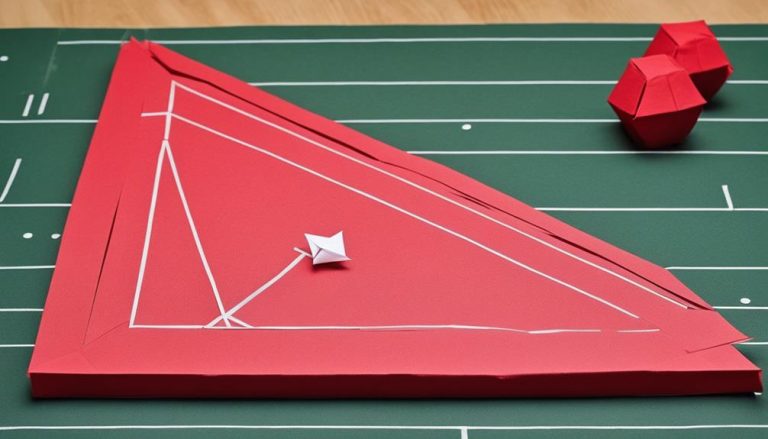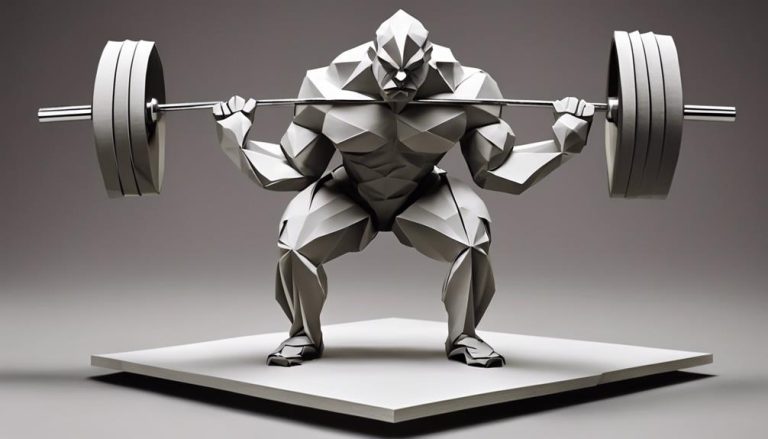General Rules of Practical Shooting
Have you ever wondered what it takes to truly excel in the domain of practical shooting? As you navigate through the intricate web of safety guidelines, equipment regulations, and scoring systems, you will find yourself on a path that demands precision, discipline, and unwavering focus. But what lies beyond these fundamental aspects of the sport? Stay tuned to uncover the hidden nuances of range commands, match procedures, target engagement, and the unspoken rules of shooter etiquette that could make all the difference in your performance.
Safety Guidelines
When handling firearms during practical shooting competitions, always keep your finger off the trigger until you are ready to shoot. This simple yet vital safety tip can prevent accidental discharges and guarantee a safe environment for yourself and others. In practical shooting, where speed and accuracy are paramount, proper gun handling is the foundation of a successful and secure match.
To adhere to safety guidelines, it is essential to equip yourself with the proper gear. This includes a sturdy holster that securely holds your firearm and allows for a smooth draw when the time comes. Additionally, investing in quality eye and ear protection is non-negotiable. Protecting your vision and hearing should never be compromised, especially in environments where gunfire is prevalent.
When participating in practical shooting events, always prioritize safety over everything else. Familiarize yourself with the range rules and regulations, and never hesitate to ask questions if something is unclear. Remember, a moment of carelessness can have severe consequences in the world of firearms.
Equipment Regulations
To maintain compliance with equipment regulations in practical shooting competitions, always confirm that your gear meets the specified standards for safety and performance. Proper attire is essential in practical shooting to guarantee safety and functionality. Wear comfortable clothing that allows for ease of movement, such as athletic pants and moisture-wicking shirts. Avoid loose or baggy clothing that may interfere with your equipment or impede your movements during a match.
Required gear for practical shooting includes a reliable firearm that meets the regulations of the competition. Make sure your firearm is in good working condition and properly maintained. Holsters are a critical piece of equipment, so invest in a sturdy, well-fitted holster that securely holds your firearm. Magazine pouches or holders are necessary for carrying extra ammunition, allowing for quick reloads during stages.
In addition to firearms and holsters, proper eye and ear protection are mandatory for all practical shooting events. Invest in high-quality safety glasses and earplugs to protect your senses while on the range. Some competitions may have specific rules regarding footwear, so make sure to check the guidelines before the event. By adhering to the equipment regulations and being properly equipped, you can focus on honing your skills and enjoying the competitive nature of practical shooting.
Scoring System
Understanding the scoring system in practical shooting competitions is important for maximizing your performance and achieving success on the range. To excel in this aspect, you must familiarize yourself with different scoring techniques, practice drills, and cultivate a competition mindset through mental preparation.
When it comes to scoring systems in practical shooting, accuracy and speed are key components that determine your overall score. Let's explore a typical scoring system used in many practical shooting matches:
| Scoring Zones | Points | Description |
|---|---|---|
| A Zone | 5 points | Highest score, usually on important areas |
| B Zone | 4 points | Good hits, outside A zone |
| C Zone | 3 points | Marginal hits, potential for penalties |
| D Zone | 1 point | Hits on non-scoring areas |
| Miss | 0 points | No hits on the target |
Practicing scoring techniques through drills that emphasize accuracy while under time pressure can greatly improve your performance. Additionally, mental preparation plays an important role in maintaining a competition mindset, helping you stay focused and perform consistently under the pressure of a practical shooting match.
Mastering the scoring system through practice and mental fortitude will certainly elevate your game and bring you closer to success in practical shooting competitions.
Range Commands
When it comes to range commands, clear communication is essential for a safe shooting environment. Safety should always remain the top priority, and it is critical that all commands given by the Range Officer are obeyed without question. Remember, following these commands diligently guarantees a smooth and secure shooting experience.
Clear Communication Essential
Clear communication is paramount in practical shooting, especially when it comes to range commands. Team coordination hinges on effective communication to guarantee smooth operations on the shooting range. Range commands must be clear, concise, and easily understood by all team members to prevent confusion and enhance efficiency. It is vital that everyone involved comprehends the commands given to maintain a safe and organized environment. Misinterpretation due to poor communication can lead to errors or accidents, emphasizing the significance of clarity in conveying range commands. Hence, practicing and adhering to standardized range commands is essential for successful practical shooting endeavors. Remember, clear communication not only fosters a sense of teamwork but also contributes to a more enjoyable and productive shooting experience.
Safety Always Top Priority
Ensuring safety remains the foremost priority during practical shooting sessions, with proper adherence to established range commands being essential for a secure and efficient environment. Safety precautions must be followed diligently to prevent accidents and guarantee a smooth shooting experience. Familiarize yourself with emergency response procedures and be prepared to act swiftly in case of any unforeseen circumstances. Always keep your firearm pointed in a safe direction, finger off the trigger until ready to shoot, and be aware of your surroundings at all times. Stay vigilant and alert, following all safety protocols without fail. Remember, safety is paramount in practical shooting, and your commitment to following range commands is critical for a safe and enjoyable shooting session.
Commands Must Be Obeyed
Maintaining a sharp focus on range commands is fundamental for a safe and successful practical shooting experience. In the world of practical shooting, following range commands with precision is critical to guarantee the safety of yourself and others around you. Here are some key points to take into account:
- Proper stance: Always be mindful of your body positioning and make sure you have a stable and balanced stance to maintain control over your firearm.
- Trigger discipline: Keep your finger off the trigger until you are ready to shoot. This essential practice helps prevent accidental discharges and maintains a high level of safety during the shooting process.
- Listen attentively: Pay close attention to the range officer or instructor giving commands and follow them promptly and accurately to maintain a safe shooting environment.
Match Procedures
As you move into discussing the points of match procedures, it's essential to contemplate elements like squad assignments and stage briefing. These aspects play a significant role in ensuring smooth operations and fair competition throughout the shooting match. Familiarizing yourself with these points will enhance your understanding and performance during practical shooting events.
Squad Assignments
When preparing for a practical shooting match, squad assignments play an important role in ensuring smooth and efficient match procedures. Squad assignments are critical for enhancing team dynamics and optimizing performance. Here are some key points to take into account:
- Building Camaraderie: Assigning squad members strategically can foster a sense of camaraderie and teamwork, enhancing the overall shooting experience.
- Balancing Skill Levels: Distributing roles based on skill levels can guarantee that each squad member contributes effectively, maximizing the squad's potential.
- Efficient Role Assignments: Clearly defining each member's role within the squad can lead to better coordination and streamlined communication during the match.
Careful consideration of squad assignments can have a significant impact on the success and enjoyment of the practical shooting match.
Stage Briefing
For a successful practical shooting match, it is essential to begin with a thorough stage briefing to guarantee all participants comprehend the match procedures. During the stage briefing, shooter positioning is explained, making sure that all competitors understand where they should start and move to during the course of fire. A detailed stage walkthrough is important, allowing shooters to familiarize themselves with the layout, target placements, and shooting positions. Timer management is stressed to make certain each participant has a fair chance to complete the stage within the allotted time. Additionally, understanding target changes is key to optimizing efficiency and minimizing time between engagements. By paying close attention during the stage briefing, shooters can enhance their performance and navigate the course successfully.
Target Engagement
Engage your targets efficiently by maintaining a steady grip and proper stance. To improve accuracy and speed during target engagement, consider the following:
- Sight Alignment: Make sure your sights are properly aligned with the target before taking your shot. Correct alignment is vital for hitting your mark consistently.
- Trigger Control: Practice smooth and deliberate trigger control to prevent jerking or flinching, which can throw off your aim. Focus on a steady squeeze to surprise yourself when the shot breaks.
- Follow-Through: After each shot, maintain your focus on the sight picture and follow through with your trigger pull. This helps in ensuring that your shot placement is accurate and consistent.
In practical shooting, mastering target engagement is essential for success. By honing your grip, stance, sight alignment, trigger control, and follow-through, you can greatly enhance your shooting performance. Incorporating speed drills into your practice routine can also help in developing faster target engagement without compromising accuracy. Remember, a balance of speed and precision is key in practical shooting, so practice diligently and aim for continuous improvement in your target engagement skills.
Shooter Etiquette
To maintain a respectful and professional environment on the shooting range, adhering to proper shooter etiquette is paramount. Proper conduct is essential in ensuring the safety and enjoyment of all participants. When on the range, always handle your firearm responsibly, keeping it pointed in a safe direction at all times and finger off the trigger until ready to shoot. Respectful communication is also key; be mindful of your language and interactions with others, fostering a positive atmosphere for everyone present.
Additionally, it is critical to follow range commands promptly and attentively. Listen to instructions from range officers and adhere to all safety protocols without hesitation. Also, demonstrate consideration for fellow shooters by not disrupting their concentration or workflow. Avoid distractions and unnecessary noise that could interfere with others' shooting experience.
Concerning equipment, maintain your gear in top condition to prevent malfunctions that could disrupt the flow of shooting activities. Regularly clean and inspect your firearms to ensure they are functioning correctly. Also, be prepared and organized, so you can efficiently move through the shooting course without causing delays for yourself or others.
Frequently Asked Questions
How Can I Improve My Speed and Accuracy in Practical Shooting?
To boost your speed and accuracy in practical shooting, focus on mastering the fundamentals first. Balance speed and precision by practicing regularly. Smooth changes, sight alignment, and controlled trigger pulls are key. Keep honing your skills!
Are There Any Specific Training Drills or Exercises Recommended for Practical Shooting?
To enhance your practical shooting skills, focus on target changes and movement techniques. Incorporate drills for grip strength and trigger control. Practice regularly with a variety of scenarios to improve speed and accuracy.
What Are Some Common Mistakes That Beginners Make in Practical Shooting and How Can They Be Avoided?
To excel in practical shooting, beginners often struggle with grip technique and trigger control. Focus on sight alignment and practice reloading drills to overcome these common mistakes. Precision and dedication pave the path to success.
How Can I Prepare Mentally for a Practical Shooting Competition?
To prepare mentally for a practical shooting competition, focus on visualization techniques. Picture yourself executing each stage flawlessly. Visualizing success boosts confidence and helps calm nerves. Stay positive, trust your training, and believe in your abilities.
Are There Any Specific Strategies or Tactics That Experienced Shooters Use to Gain an Advantage in Practical Shooting Matches?
To gain an edge in practical shooting matches, experienced shooters craft match strategies that exploit their competitive advantage. By honing skills, mastering shifts, and staying adaptable, you can outwit your rivals tactically.






